|
Oh this plant, what can I even say? It sells itself through its loveliness, its bright yellow brilliance standing in giant pre-bouquet bunches in the meadow and smaller huddles in the forest. It's late in the growing season yellow seems to internalize sunshine and hold it for us for the rest of the year. I love to preserve it partly for that purpose. I am currently reading my new favorite book, Braiding Sweetgrass by Robin Wall Kimmerer (I am in love with this book, please check it out), in which the author talks about trying to figure out why goldenrod and purple asters look so beautiful next to each other. When she asked this before starting college for botany, she was told she should major in art instead. She was disappointed, understandably, that no one had an answer for her and didn't think this was an important part of botany. I agree with that sentiment. She later found out that, alone, both of these plants are wonderful pollinator attractors, but together they're a pollinator attractor super duo! So their collaboration is mutually beneficial, woah good metaphor for life! There's a ton of goldenrod species that are native to the USA and a few more in other countries. There's about 75 species in this region (according to the Flora of the Southern and Mid-Atlantic States by Alan Weakley)! They're not difficult to identify and I don't think there's anything else, at least around here, that looks similar to them and blooms at the same time of year. However, as Juliet Blankespoor of Chestnut Herb School says (in her article "Goldenrod: The Bees Knees and Urethras Love it Too"), they can look close to another plant in the aster family, commonly called ragwort (not ragweed, which we'll talk about in a minute). Though it would be very uncommon to see a ragwort blooming this time of year. BOTANY As you can see above, the sturcture of the goldenrod plants can vary greatly. The top picture was in an open field, and the bottom on the edge of a woodland. They can have flowers only near the top of the plant on branching stems, or flowers in clusters along the central stem, between the leaves, and interesting structures in between. As I said, they're in the aster family, Asteraceae, along with about one of every nine plants in the USA. If something has a flower that looks like the shape of a daisy (no matter size or color), it's mostly in the aster family. Though there are some asters that don't look this way, like the thistle below. They also have alternate, generally long oval-ish or narrow leaves with coarse teeth that come to a point at the ends. You'll often see them with giant galls, or hard ball-like structures on the stem. These are caused as a result of the goldenrod gall fly. You can often cut them open carefully and find the living larva getting ready to eat its way out. The Latin name of goldenrod's genus is Solidago, which means "to heal or make whole". This comes from one of its other common names, "woundwort", (referrring especially to the European species Solidago virgaurea) as it was found to be helpful applied topically for healing or binding tissue back together. EDIBILITY I like eating the flowers, partially just because it's fun to eat flowers. My favorite thing to make from them is goldenrod infused honey. This isn't the goldenrod honey you'll find at the store that involves the pollen of the goldenrod, it's made by harvesting the flowers, letting them dry a little (to avoid mold) and infusing them in honey for a couple weeks (check out the recipe in my new book, The Herbal Handbook for Homesteaders). I love to leave the flowers in for a whole beautiful sensory experience when I eat it. HERBAL GOODNESS Though some people (not me) don't like the slightly musky taste of the leaves, they make a lovely mild tea. I include the flowers and the leaves in an infusion, chopping coarsely and steeping, covered, for 20 minutes or more. This is a favorite tea of mine for the allergy season, as it's an awesome antihistamine, decongestant, and anti-inflammatory (basically anti-allergy). I also include goldenrod in allergy tinctures, adding a mucilaginous (demulcent) herb, like marshmallow root or rose of Sharon, to counteract the drying effect it can have. Many people wrongly accuse goldenrod for their fall allergies, when it's actually ragweed, that's blooming at the same time, that is the culprit. Ragweed pollen is tiny and flies easily, getting into our sinuses and making us miserable. However, goldenrod pollen is giant and sticky, so doesn't fly well. It makes a fabulous ragweed antidote. My student, Lisa, gave me a fabulous gift of goldenrod infused oil. Because goldenrod is anti-inflammatory, it works wonders topically for inflammation, and is especially helpful for menstrual cramps. Try it! It's also a bladder and kidney tonic, helpful with urinary incontinence and urinary tract infections. Talk to your healthcare practitioner and do more research before trying, it can be contraindicated with chronic liver or kidney disorders or when diuretics are contraindicated. FUN This one I'm super excited about! Goldenrod makes a beautiful yellow dye! In my upcoming retreat: Retreat & Reconnect: Wild Color, our timing is perfect to include goldenrod as one of our natural dyes. Come join me and check it out! Hopefully, now you've seen the light, the sunshiny brilliance of goldenrod that is! Let me know if you try the tea or honey, or if there's something else you love to do with goldenrod, in the comments below.
0 Comments
There's a fungus among us! Actually, with all the rain we've had, there's a cornucopia of fungi among us! It always amazes me when I come upon an abundance of choice edibles (that's what the fungal nerds call the super tasty mushrooms), and no one has noticed or harvested them. Mushrooms are sometimes called the meat of the forest because they have so much protein in them. So, if you're a vegetarian, looking for a free protein-rich meal, or wanting to know how to survive in the woods with the least amount of effort (hunting takes a lot of energy), then knowing your mushrooms is priceless! Of course, I have to start with the obligatory disclaimer, becauase you may have heard the famous saying, "There are old mushroom hunters, and there are bold mushroom hunters, but there's no old, bold mushroom hunters!" It's for real, y'all! So, I'll say it again, Always have 100% positive identification of anything wild before you eat it! And if you don't know, ask. There's probably a local botanist/mycologist/forager who can tell you. If you can, go on a walk with someone knowledgeable (hint, hint, check out my upcoming walks here). To continue with that disclaimer, it's a lot harder and more deceptive to learn mushrooms (and plants) from books. The following is just an introduction. Please make sure you know before you eat! Also, none of this information is backed by the FDA, it's been compiled from research of studies and traditional history. These mushrooms are species that I've seen growing in the eastern US, but may be more widespread depending on species. There are also plant or mushroom identification groups springing up all over Facebook. Here's a few good ones: The Mushroom Identification Forum Edible Wild Plants/Mushrooms/Trees, Identification & All Aspects Discussion Herb, Plant, & Foraging Identification Workgroup Plant Identification Botany Everyday (my friend, Marc Williams' awesome by donation educational site, support if you can) Do you have any favorite pages or sites? Please share in the comments. And on with the mushrooms! Turkey Tail (Trametes versicolor) I've seen most abundantly in the Midwest, though sometimes here in the southern US, too. Being hard and almost woody, it's a medicinal, not an edible. There are some look-alikes, probably not poisonous and very possibly medicinal, too, that just haven't been studied much. The way you tell them apart from other species is the pore surface (or underneath part with the little holes). Most mushrooms have pores or gills (like a portabella). These should have a white pore surface with tiny pores just visible to the naked eye, if you have good eyesight. The tops can also vary in color anywhere from brown to gray to blue to green. The current research is showing that many wild mushrooms are not only medicinal, but anticarcinogenic, too. This means they supposedly fight and prevent cancer, and turkey tails are supposed to be one of the best. They are also said to be immunomodulators as well, meaning they are believed to be safe for folks with autoimmune disorders because, instead of boosting the immune system, they take it from where it is to where it needs to be. Nature is so cool, right?! It's recommended to make medicine from the mushrooms using what's called a double or dual extraction because they have alcohol and water soluble components. This means making a separate alcohol tincture, then a tea decoction (very long simmer), and then combining the two. There's lots of online sources for how to do this. This is my favorite book on the subject. If you're not ready to make your own tincture, you can find my lovingly wildcrafted four mushroom blend here and support my work. Chanterelle (Cantherellus species) Chanterelles are a favorite eating species for me, partly becauses they're so abundant. I tend to see them in July, but I just found this big one in West Virginia on September 2nd. They like to grow on the edge of old road cuts, so look for them on the side of trails. Their spores (kind of like plant seeds) tend to wash downhill. If you see them, make sure to look around the area, and especially up and downhill from where you find them. They're fragrant and lovely, often said to smell like apricots. When you harvest mushrooms, do yourself a favor and field dress them by cutting off the bottom part with the attached soil, giving them a light tap on the top to release any little insects, and bringing a little paint brush or a special tool made for this that has a curved knife on the top and a brush on the bottom, to brush out the soil stuck in crevices. The awesome thing about mushrooms is that they're the fruit of the organism, like an apple on a tree, so you can pick as many as you want without hurting it, since most of the life is underground or under the tree bark. (This isn't true of chaga, which isn't a true mushroom, so please don't overharvest it.) The trick to chanterelle identification is that they don't have true gills. They're sometimes called ridges. Can you see them here? Chanterelles also grow on the ground individually, as opposed to their most commonly confused poisonous look-alike, Jack-o-lantern (Omphalotus species), which grows on wood and in clusters. However, that can be slightly deceiving since they could be growing on decaying buried wood or roots. The coolest thing about Jack-o-lanterns is how they got their name, because they often glow in the dark! They are also supposed to make a good purple dye, too. To cook mushrooms, there are a few simple guidelines:
Oyster (Pleurotus species) Oysters are probably the most abundant edible species with the longest season that you'll find in this region. This is partly because they're not very picky about which tree species they grow on. I've seen them on ashes and tulip poplars, but there are many more, and they can grow on living or dead trees. You have to catch them at the right time. Too late, and they're dried out, too wet, and they're mushy and gross. This is a good one to tap the top, because little tiny beetles like to hide in the gills. The oysters have a very specific smell to them that you'll always know once you've smelled them. Indigo Milkcap! (Lactifluus [previously Lactarius] indigo) These are pretty rare to see, but I had to include them because they're just so amazing. The milkcaps are a kind of mushroom that exude a milk-like substance from the gills, especially when they're fresh. They're not all edible, but these are. These even exude a blue milk! My friend and awesome forager, Jenifer, was remarking how incredible it is to see something that's naturally blue and doesn't make you vomit (or want to) when you eat it. Ditto to that! Lobster (Hypomyces lactifluorum) These may possibly be the most incredible mushroom! They start as a white, mostly inedible mushroom in the Lactarius or Russula genera (plural of genus), and are colonized by a different fungus to turn them orange and super edible. Woah, Mother Nature! These start having gills and end up with no gills or faint ridges. They smell and taste somewhat lobsterish and grow on the ground, usually in groups, but not clusters. Lobsters love to grow in pine forests, thought I've seen them in areas of more decidous woods, too. These are also often a dye mushroom with a wide variety of dye colors. We'll be trying them out at my Wild Color Retreat coming up soon. Check it out! Honey (Armillaria species) There is one thing that makes honey mushrooms super spectacular. They are the largest living organism on earth! They cover almost 2,400 acres in Oregon!!! While it's recommended to gather wild mushrooms in mesh bags to help spread the spores, the opposite is true for these. They can destroy trees, so collect them in non-mesh bags. Honey mushrooms are definitely at leaste a 202 level mushroom, i.e. not for beginners! This is because they could be confused with a very poisonous mushroom called The Deadly Galerina. Here's what that one looks like. There are ringless honey mushroom and ringed honey mushrooms. I find mostly the ringless in the Midwest, which are also blamed for causing possible gastric upset, which can possibly be prevented by parboiling them first. I've never experienced any problems with them. But it brings up a good point. For any mushrooms you're trying for the first time, it's a good idea to only try a tiny bit and wait 24 hours to see if you have a reaction. Anyone can be allergic to anything. I've heard a couple of reasons why honeys are called honeys. One is because of their buff honey color. The other is because they get sticky on top when they get wet. There are several ways to tell them apart from the deadly Galerina. One way is the little hairy dots on top of the cap of ringless honeys. The ringed honeys have a ring of flesh around the stalk. The best way to tell them apart, though, is the spore print. The spores are white (as opposed to the deadly Garlerina's brown spores). You can take a spore print by putting the cap face down on newspaper and covering it with a bowl, then waiting a few hours. You'll have a beautiful print in the shape of the mushroom cap and gills. However, usually you can cheat with honeys. Since they grow in clusters and have prolific spores, their spores can often be seen on the caps of the lower mushrooms in the cluster, where they fell. Once again, do not try eating this one at home until it's been shown to you by a trusted teacher! Look here for more info on the Deadly Galerina and here for more info on Honey Mushrooms. Chicken of the Woods (Laetiporous sulphureus or Laetiporous cincinnatus) Ahh, good old Chicken of the Woods. I have a special connection to this one partly because I'm from Cincinnati and the cincinnatus part came from a high school teacher in Cincinnati who was the first one recorded as describing it and giving it this name. I wonder what the Native American call it. (I'm reading the fabulous book, Braiding Sweetgrass, and it's inspiring me to curiosity.) That species has a white to pinkish underside, while the sulphureus species got its name for the yellow underside. It's a very beefy mushroom, tasting like chicken. It can take awhile to soften it up, so my favorite thing to do with it is make "chicken" curry. Some people get gastric upset from this one, which I suspect is a result of not cooking it long enough. When you harvest it, make sure to get it while it's still semi-tender, or just take the more tender outer edges. It likes to grow on oaks especially. Lion's Mane (Hericium erinaceus) I made this one huge, so you could see the detail. Sometimes some related species are called comb's tooth mushroom. I think that kind of describes it, too. My same foraging friend, Jenifer, and I just found about 7 of these in the woods in Cincinnati. There is something magical that happens when you've been foraging for awhile. The plants and mushrooms become old friends. Every year it's like a homecoming when you see them again for the first time. But then there are some that you only see very rarely, and then it's super special, especially when they hold such special medicine. That's what happened when we saw these.
We were about 3/4 through a pretty rough, overgrown hike through brambles and thousands of burs. It was Cincinnati summer, so in the 90s with like a bajillion percent humidity. We were worn. Then, I just happened to turn around at the exact right moment and gasped. Jenifer turned at the sound and shrieked. There's almost nothing better than foraging with someone who knows and appreciates the forageables as much as you do. These are a species that can cause a major dilemma for me. I can't deciede whether to eat them or make medicine out of them. I think they are one of the most medicinal mushrooms in the world right now. They are said to be basically a miracle for brain function and nerve regeneration, great for memory and learning, for Parkinson's, Alzheimer's, and ALS, and repairing nerve damage. I highly encourage you to do your own research. Again this one is very sponge-like, so definitely don't clean it with water. My advice would be to eat a little and make medicine out of the rest. They grow on several hardwood species, especially oak. That is all for now. There's so many more I could have included and some I could have left out, but they are all special to me. As always, it's a perfect opportunity for gratitude. They are giving of themselves for our food and medicine. The least we can do is say thank you. Please comment on your experiences with them below and which ones are your favorites. Forage on! |
Want to help us continue to do this important work |
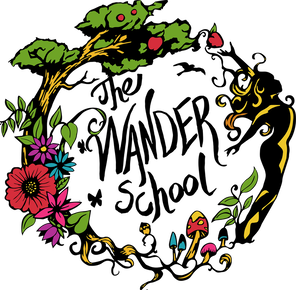
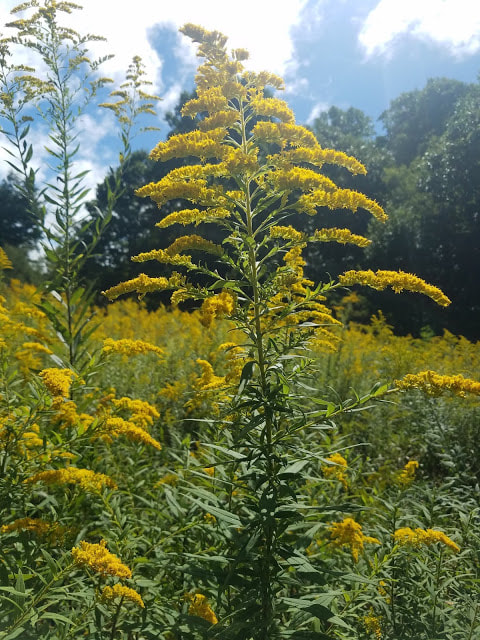

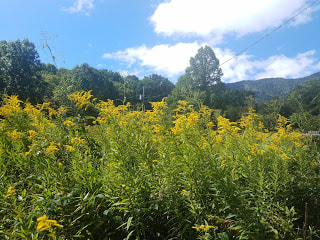
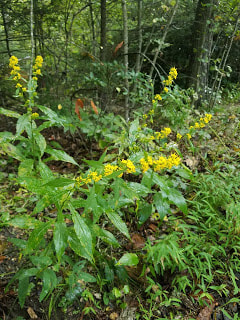
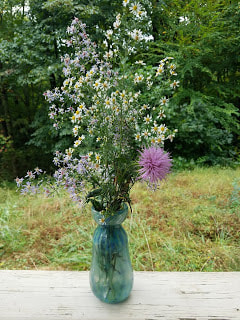
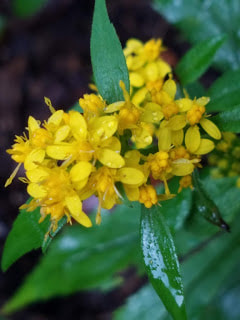
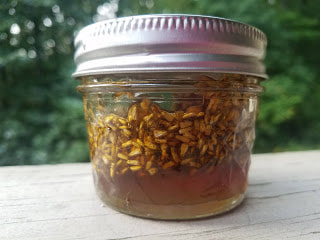
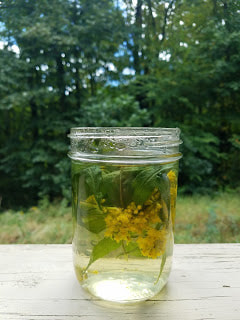
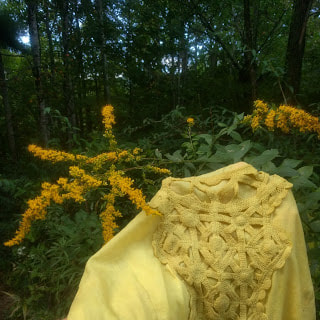
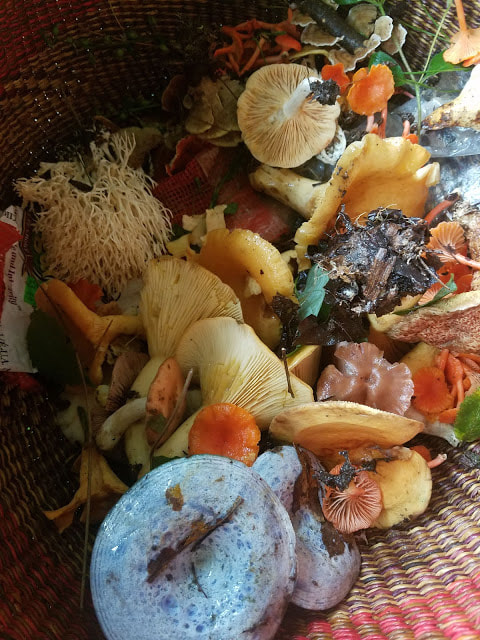
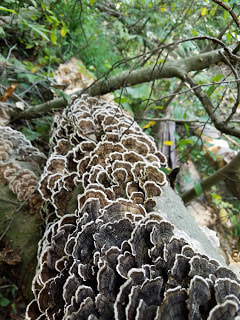
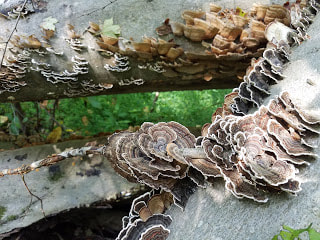
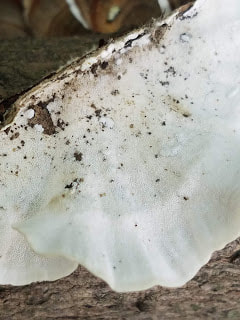
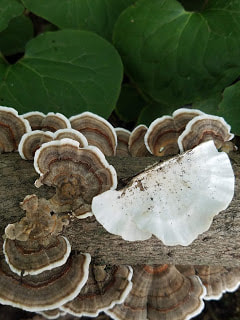
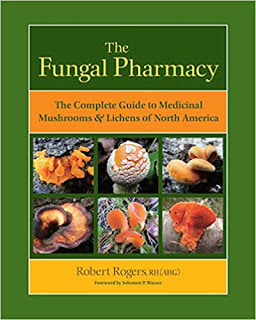
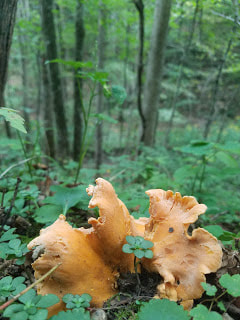
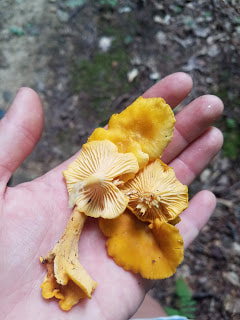
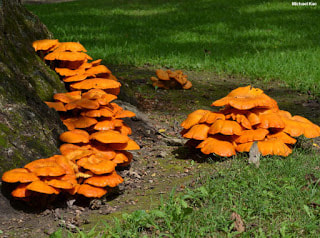
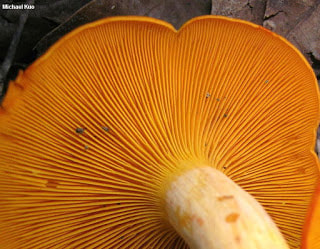
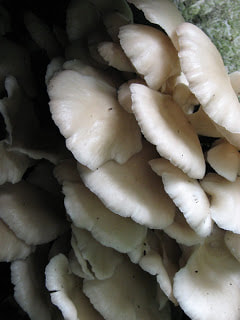
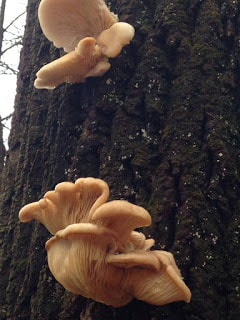
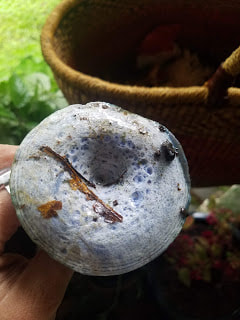
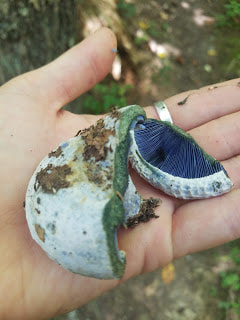
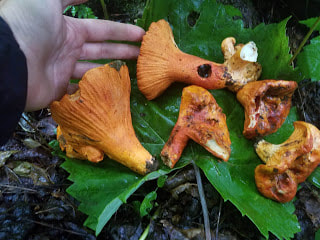
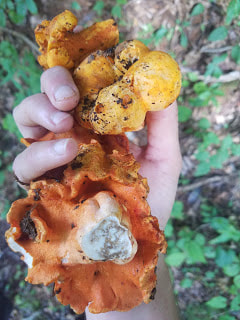
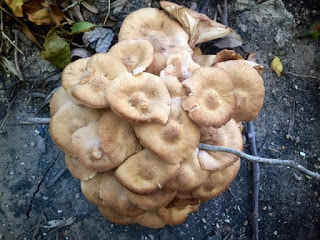
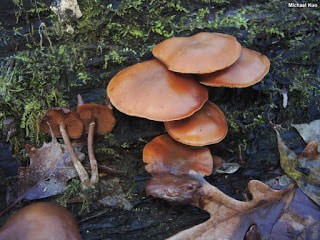
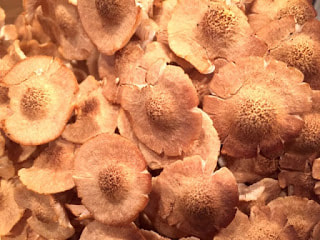
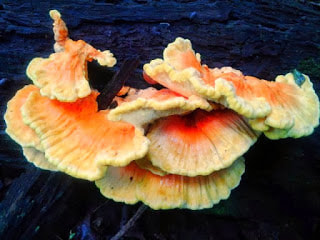
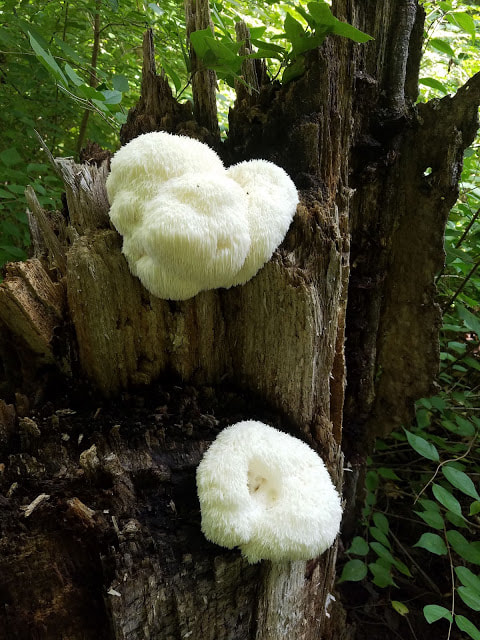

 RSS Feed
RSS Feed